Case Study: AM/FM Radio Generates Incremental Reach And Amplified Frequency For TV Tune-In Campaign
A major cable network used AM/FM radio to help launch the returning season of a scripted drama series. Their media plan also included paid TV and promos running on their network and co-owned networks. Westwood One retained Nielsen to study how the combination of AM/FM radio and TV helped drive tune-in for the premiere. We wanted to understand how radio impacted the marketing mix.
Using the 80,000 person Portable People Meter panel for AM/FM radio and TV audiences, Nielsen looked at four different groups: those unexposed to the radio campaign, those who were exposed to the radio campaign, those exposed to the TV campaign, and those who saw/heard both the TV and radio ads. Nielsen then measured the tune-in conversion impact of the groups. Ad occurrence data was sourced from Media Monitors for AM/FM radio and Nielsen Ad Intel for paid TV and TV promos.
Here are the key findings:
AM/FM radio accounted for a small percentage of the media budget but generated significant impressions and incremental reach
Although AM/FM radio only represented 5% of paid media, it delivered 20% of total campaign impressions. Those impressions translate to incremental reach.
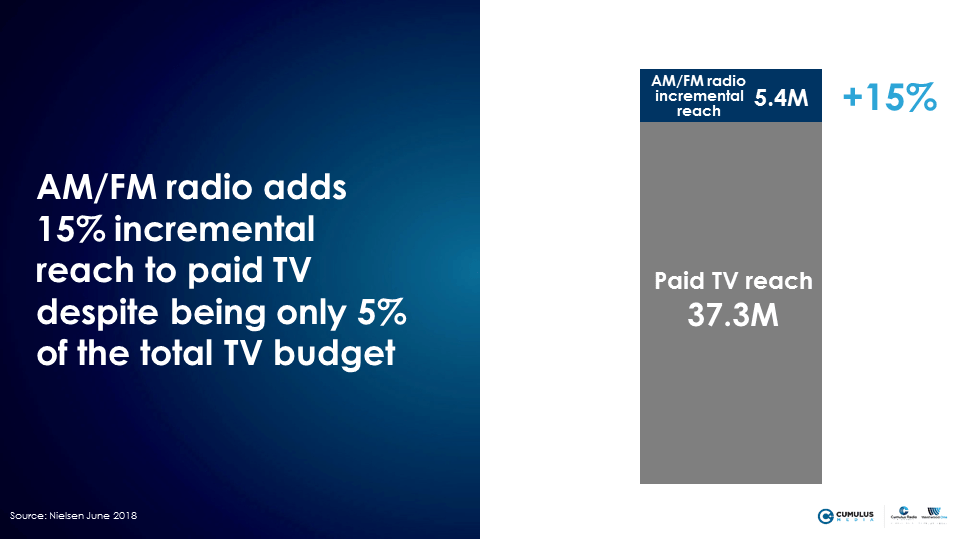
The paid TV campaign reached 37.3 million Americans. AM/FM radio added an incremental audience of +15%, bringing 5.4 million new sets of eyes to watch the series.
With amplified frequency, AM/FM radio drove tune-in conversion
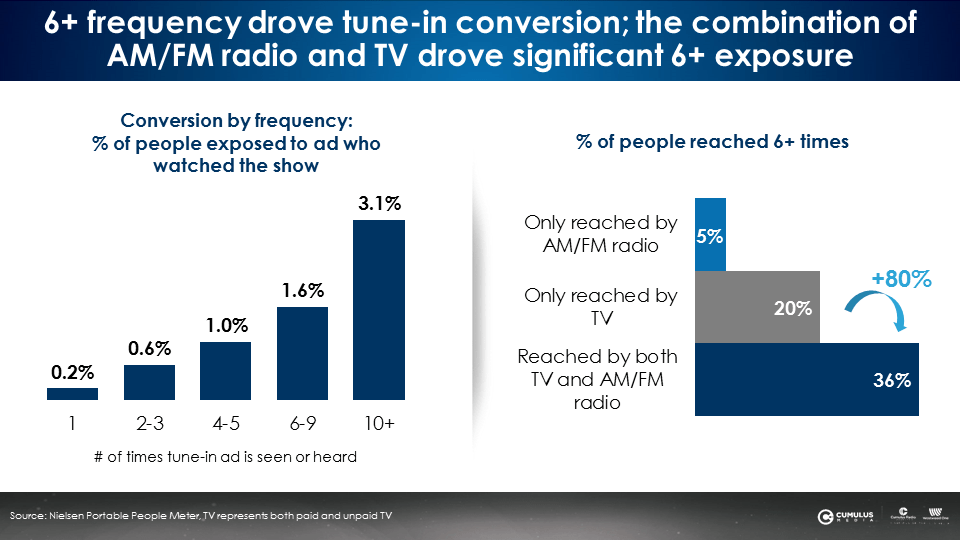
The more frequently consumers were exposed to tune-in ads, the greater the conversion to viewing the premiere. Tune-in conversion was especially high among consumers who were exposed to ads six or more times.
AM/FM radio amplified paid TV 6+ frequency by 80%. Those who were exposed to the campaign messaging more times on both platforms tuned in at a higher rate than those who were reached only on AM/FM radio or just TV.
Compared to TV, AM/FM radio delivered a much younger audience
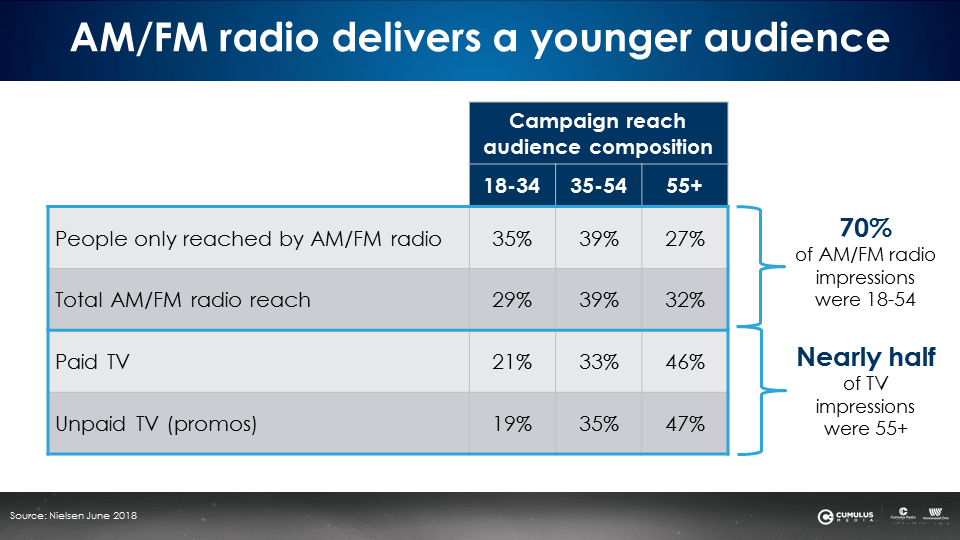
TV’s audience skews older than AM/FM radio’s audience. 70% of AM/FM radio impressions came from 18-54 year olds. Conversely, nearly half of all the TV impressions were from 55+.
AM/FM radio is the exceptionally efficient media choice
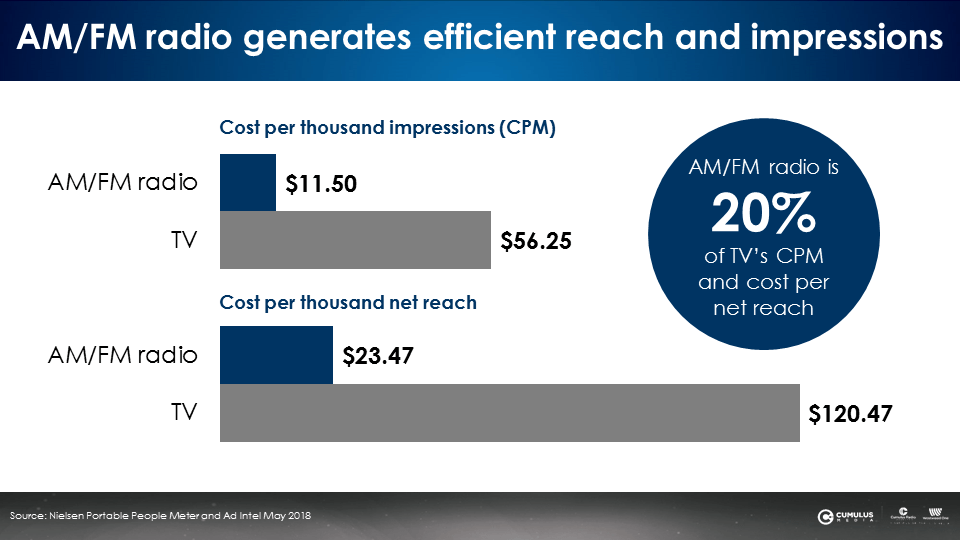
From a cost standpoint, AM/FM radio’s reach and impressions were achieved much more efficiently. AM/FM radio is only 20% of TV’S CPM and cost per thousand net reach.
TV tune-in best practice: Utilize 125-150 GRPs of network radio to efficiently optimize a tune-in campaign with incremental reach and amplified frequency
If only 5% of the budget grows paid TV reach by 15% and amplifies frequency 80%, allocating more budget to AM/FM radio will increase campaign impact.
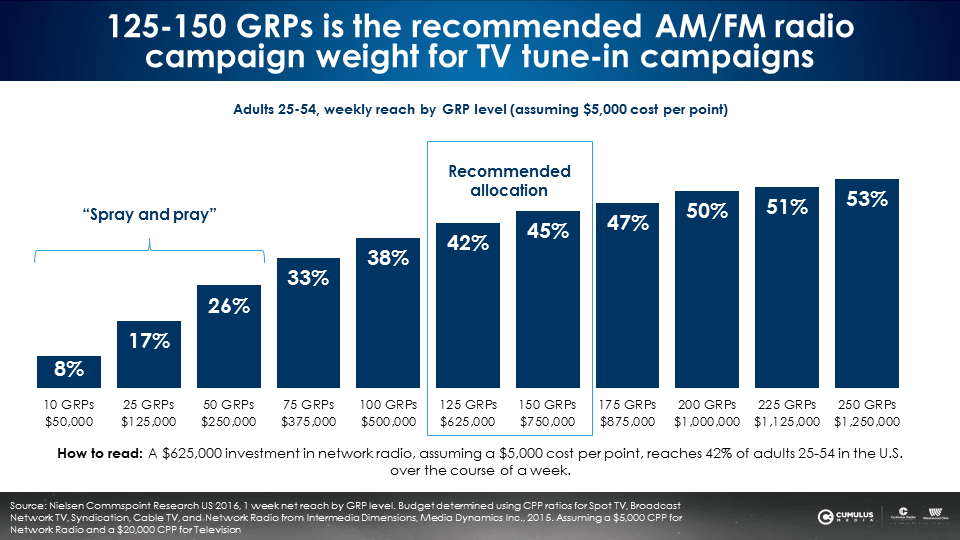
TV tune-in campaigns should move away from the “spray and pray” methods of only 10 to 25 campaign GRPs! 10-25 GRPs only generate a 8-17% reach. Allocating 125-150 GRPs to AM/FM radio is the recommendation. A $625,000 investment in network radio reaches 42% of adults 25-54 weekly in the U.S.
Driving TV tune-in effectively requires AM/FM radio and TV working in unison. Advertisers can increase tune-in campaign impact by shifting some of the media budget from paid TV to AM/FM radio to boost reach, frequency, and attract TV program viewers among a desirable younger audience.
Key takeaways:
- AM/FM radio accounted for a small percentage of the media budget but generated significant impressions and incremental reach
- With amplified frequency, AM/FM radio drove tune-in conversion
- Compared to TV, AM/FM radio delivered a much younger audience
- AM/FM radio is the exceptionally efficient media choice
- TV tune-in best practice: Utilize 125-150 GRPs of network radio to efficiently optimize a tune-in campaign with incremental reach and amplified frequency
Lauren Vetrano is Director of Content Marketing at CUMULUS MEDIA | Westwood One.
Contact the Insights team at CorpMarketing@westwoodone.com.